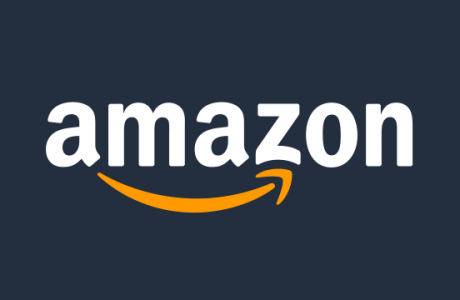Digital advertising has transformed and within this realm Amazon Advertising emerges as a powerful strategy for global brand visibility. Ever wondered how some products on Amazon seem to jump out at you, even when you’re just browsing? That’s often the magic of Amazon Advertising, a powerful tool that helps sellers like you reach millions of potential customers.
Imagine it like a busy marketplace but instead of shouting, you can pay for a prime spot with flashing lights and catchy music. That’s what Amazon Ads do – they put your products in front of the right people at the right time, boosting your sales and brand awareness. This digital marketing platform, powered by Amazon, allows sellers and brands to showcase their products directly to millions of potential customers.
How Does Amazon Ads Work?
Amazon Ads operate on a straightforward principle. Sellers bid on keywords relevant to their products and when shoppers search for those terms, the ads appear. This strategic placement enhances product visibility, increasing the chances of customer engagement.
For example, you choose keywords relevant to your products, like “comfy headphones” or “waterproof phone case.” Then, you set a price you’re willing to pay when someone clicks on your ad. The higher your bid and the better your ad’s relevance to the search, the higher your chances of winning that prime spot.
Amazon Ads Cost
How much does Amazon charge for advertising? Amazon Ads have become an essential tool for businesses looking to reach a vast audience directly on the platform. The cost of advertising on Amazon in India is quite flexible, making it accessible for businesses of all sizes.
Amazon uses a Cost-Per-Click (CPC) model, meaning you only pay when someone clicks on your ad. For Sponsored Products, which are the most popular ad type, the average CPC typically ranges from ₹7 to ₹30, depending on the competition for your targeted keywords. Sponsored Brands, which showcase your brand and multiple products, usually have a higher CPC, ranging from ₹15 to ₹50.
You can start with a daily budget as low as ₹500, allowing you to control your spending and scale your campaigns as you see results. A well-optimized campaign might cost you around ₹10,000 to ₹50,000 per month, depending on your goals and product category.
Types of Amazon Ads
Amazon offers a variety of ad types to help businesses connect with customers and drive sales. Here’s a quick overview:
- Sponsored Products: These are probably the most common Amazon ads. They promote individual products and show up in search results or on product pages. The cool part is you only pay when someone clicks on your ad, so it’s a pretty efficient way to boost visibility for specific items.
- Sponsored Brands: If you want to showcase your brand along with a few of your top products, Sponsored Brands are the way to go. These ads appear at the top of search results and can include your brand logo, a catchy headline, and a selection of products. It’s a great option for building brand awareness and driving traffic to your Amazon Store or a custom landing page.
- Sponsored Display: Sponsored Display ads help you reach customers who have already shown interest in your products or similar items. These ads appear on Amazon and even outside of it, on third-party websites. They’re especially useful for retargeting potential customers and encouraging them to make a purchase.
- Amazon DSP (Demand-Side Platform): If you’re looking to go big with your advertising, Amazon DSP lets you run video and display ads not just on Amazon, but across the web. You can target audiences based on their demographics, interests, and behaviors, making it a powerful tool for brands that want to scale their marketing efforts.
Each of these ad types offers a unique way to reach customers, whether you’re focusing on boosting product visibility, building your brand, or retargeting potential buyers.
Benefits of Amazon Ads
- Increased Visibility: Amazon Ads help your products stand out in a crowded marketplace, making them more visible to shoppers who are ready to buy.
- Targeted Reach: You can target specific customer segments based on their shopping behavior, interests, and demographics, ensuring your ads reach the right audience.
- Cost-Effective: With a pay-per-click model, you only pay when someone clicks on your ad, making it a budget-friendly option for businesses of all sizes.
- Enhanced Brand Awareness: Sponsored Brands and Display Ads allow you to showcase your brand and build recognition among millions of Amazon shoppers.
- Retargeting Opportunities: Sponsored Display ads can retarget customers who have viewed your products or similar items, helping to convert interested shoppers into buyers.
- Measurable Results: Amazon provides detailed analytics, so you can track the performance of your ads in real-time and make data-driven decisions to optimize your campaigns.
- Seamless Shopping Experience: Since ads appear directly on Amazon, customers can easily click through to purchase, leading to a smoother path to conversion.
How To Optimize An Amazon PPC Campaign?
Optimizing your Amazon PPC campaign is essential for maximizing your ad spend and driving more sales. By focusing on key areas like keywords, bids, and product listings, you can significantly improve your campaign’s performance. Here are some quick tips to help you get started:
- Research Keywords: Focus on relevant and high-converting keywords to target the right audience.
- Adjust Bids: Regularly tweak your bids based on performance, increasing for top performers and reducing for low performers.
- Use Negative Keywords: Exclude irrelevant search terms to avoid wasting your budget on unproductive clicks.
- Optimize Product Listings: Ensure your product titles, descriptions, and images are well-optimized to improve click-through and conversion rates.
- Monitor Performance: Keep a close eye on key metrics like ACoS and CTR to make data-driven decisions.
- Test Continuously: Experiment with different ad strategies and optimize based on what works best.
- Refine Targeting: Use audience insights and adjust targeting to reach the most relevant shoppers.
- Budget Allocation: Allocate more budget to high-performing campaigns while cutting back on underperformers.
Amazon Ads Example
Ankle-Boot Brand’s Successful Amazon Ads Campaign
Company: A fashion brand specializing in stylish ankle boots.
Objective: Boost sales and increase brand visibility for a new collection of ankle boots.
Campaign Details:
- Sponsored Products: The brand created a Sponsored Products campaign targeting keywords such as “trendy ankle boots,” “leather ankle boots,” and “best ankle boots 2024.” By bidding on these relevant keywords, the brand’s ankle boots appeared prominently in search results when shoppers searched for these terms.
- Sponsored Brands: The brand ran a Sponsored Brands campaign featuring a catchy headline like “Step Up Your Style with Our New Ankle Boots Collection.” The ad showcased a selection of ankle boots, included the brand’s logo, and linked to the brand’s Amazon Store, where shoppers could browse the full collection.
- Sponsored Display: To retarget visitors who viewed their ankle boots but didn’t purchase, the brand used Sponsored Display ads. These ads appeared on Amazon’s product detail pages and other websites, reminding potential customers of the ankle boots and encouraging them to return and complete their purchase.
Results:
- Increased Visibility: The Sponsored Products ads led to a significant increase in impressions and clicks, driving more traffic to the product listings.
- Higher Sales: The Sponsored Brands campaign helped elevate brand awareness and drove a notable rise in sales, as shoppers were drawn to the brand’s full collection.
- Effective Retargeting: Sponsored Display ads successfully brought back interested shoppers, resulting in a higher conversion rate and boosting overall sales.
The comprehensive Amazon Ads strategy resulted in a successful launch of the new ankle boots collection, with a substantial increase in both visibility and sales for the brand.
FAQs Related to Amazon Advertising
Who can run Amazon ads?
Anyone with an active Professional seller account on Amazon can run Sponsored Products ads, the most basic type of Amazon ads. To explore other ad formats like Sponsored Brands and Stores, you need to be enrolled in the Amazon Brand Registry. Vendors (wholesale suppliers) and agencies managing client accounts can also run Amazon ads on their behalf.
Why does Amazon have ads?
Amazon incorporates ads as a revenue stream and a means to enhance the overall shopping experience. By displaying targeted ads, Amazon allows sellers to promote their products to a wider audience. This advertising revenue contributes to the company’s financial growth, enabling continued investments in services, infrastructure, and innovations. Ads also play a role in optimizing product discovery for shoppers, providing them with personalized suggestions based on their browsing and purchase history. Ultimately, the inclusion of ads on Amazon aligns with the platform’s goal of creating a more robust and sustainable ecosystem for both sellers and customers.
Is Amazon ads profitable?
The profitability of Amazon ads depends on various factors, including the product niche, targeting strategies, and ad optimization. Many businesses find success by leveraging Amazon’s vast customer base and efficient ad targeting tools. When executed strategically, Amazon ads can drive product visibility, increase sales, and deliver a positive return on investment. However, success requires careful monitoring, continual adjustments, and a solid understanding of advertising metrics. It’s crucial for advertisers to refine their campaigns based on performance data to maximize profitability. Overall, with effective planning and execution, Amazon ads can be a profitable investment for businesses looking to thrive in the e-commerce space.



